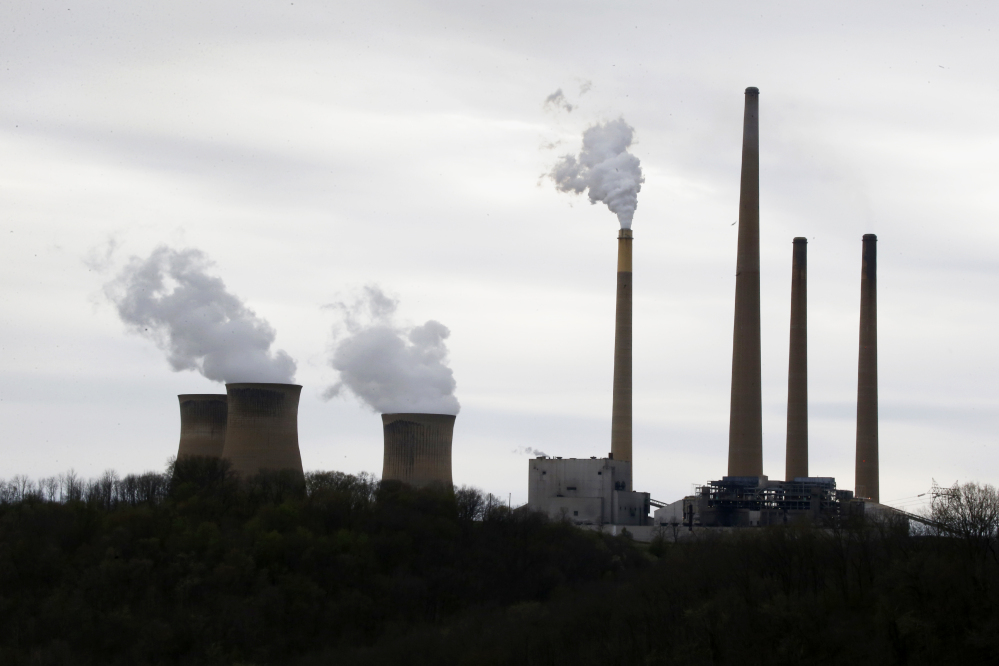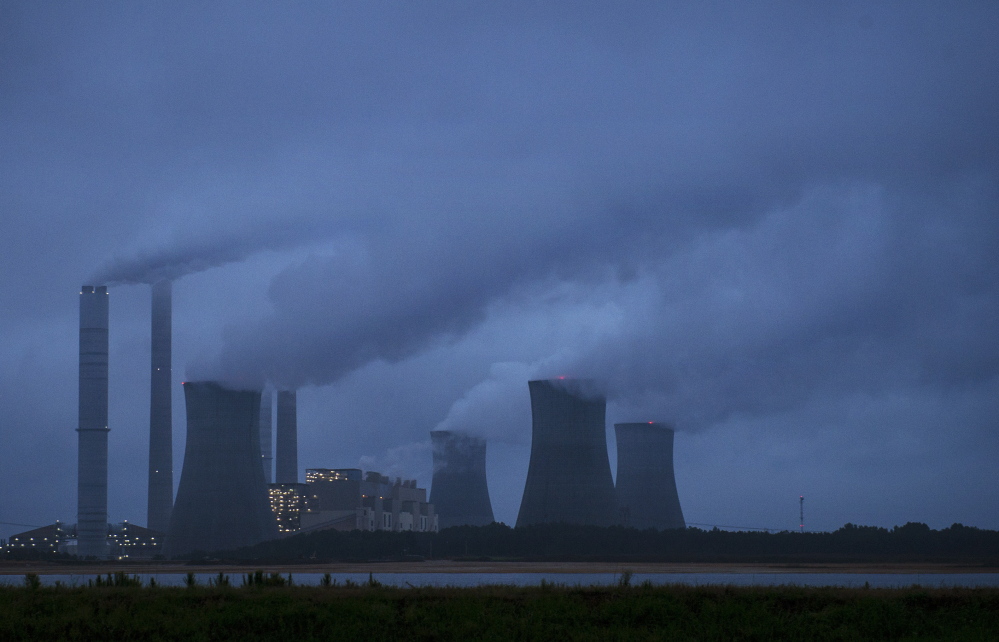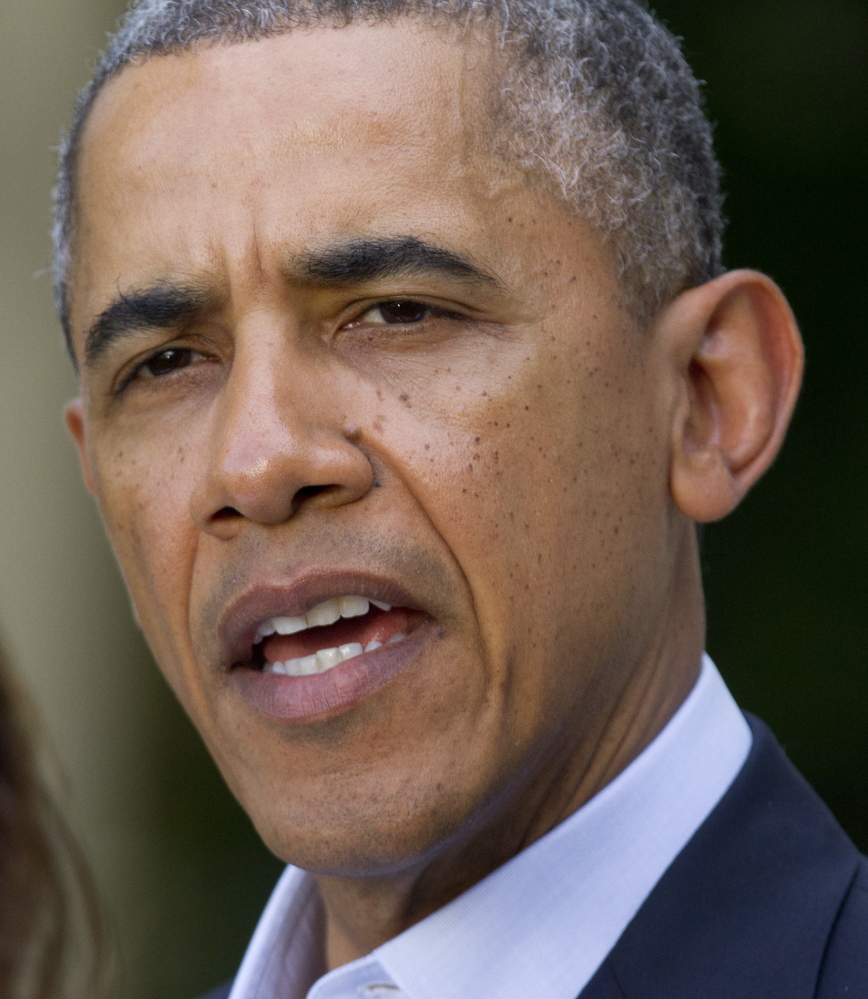WASHINGTON — A new Obama administration proposal to cut carbon dioxide emissions from existing power plants prompted an immediate backlash from Democrats in conservative-leaning states Monday, underscoring how the president’s energy policy will become a major front in the battle for control of Congress this fall.
The Environmental Protection Agency’s proposed rule, which is subject to public comment and will be finalized a year from now, would cut carbon dioxide emissions from existing natural gas- and coal-fired plants by up to 30 percent from 2005 levels by 2030. By targeting the nation’s single biggest source of carbon output, the proposal plays a central part in President Obama’s pledge to address climate change before leaving office.
Environmentalists and liberal supporters of the president hailed the move under the Clean Air Act as a long-overdue effort to tackle one of the biggest threats facing the planet. But the plan adds complications for Democrats already facing a difficult midterm election landscape, and both sides announced plans Monday to pour money into states that will be pivotal this fall.
Nineteen states get more than half their electricity from coal-fired power plants, according to data collected by the Energy Information Administration. Kentucky and West Virginia get more than 90 percent of their power from coal. The EPA made concessions to those states in setting its climate target. Coal-heavy Indiana, for example, would need to make smaller percentage cuts than New York or Washington states.
But the compromises did little to curb the attacks on Democratic candidates running in battleground states.
The National Republican Senatorial Committee announced that it would use the decision against vulnerable Democrats with automated calls on Tuesday hitting voice-mail boxes in Virginia, Louisiana, Colorado and Alaska — all states where Democratic senators are seeking re-election. The committee will also target Northern Virginia swing voters, Gulf Coast residents, and independents in Colorado and Alaska, a committee spokeswoman said.
The regulations are “all part of (Obama’s) radical energy plan, which he said would make electricity rates âskyrocket,’ ” the robo-call targeting Virginia’s senior senator will say. “Tell Mark Warner higher gas prices and new EPA regulations just don’t make sense for Virginia.”
Some Democrats were also quick to criticize the proposal, including Kentucky Senate candidate Alison Lundergan Grimes and West Virginia Secretary of State Natalie Tennant, who is running for an open U.S. Senate seat. Tennant pledged to “stand up” to Obama, EPA Administrator Gina McCarthy “and anyone else who tries to undermine our coal jobs.”
Rep. Nick Rahall, W.Va., one of the most vulnerable Democrats seeking re-election this year, pledged to introduce legislation to try to block the new rules. Several Senate Democrats, such as Mark Begich of Alaska and Mary Landrieu of Louisiana, who are friendly to the oil and gas industries that dominate their states, issued cautious statements saying they would work with the EPA to make sure the plan did not hurt their constituents. Sen. Kay Hagan, D-N.C., said she is “looking for a balance” that will cut carbon emissions but work for businesses as well.
Sen. Edward Markey, D-Mass., a major supporter of federal limits on greenhouse gas emissions, said in an interview that his party was big enough to encompass these disparate views. “Our Senate candidates will be trying to protect the best interests of their states, and I think ultimately that’s going to lead to them to being successful this fall,” he said.
Meanwhile, Obama and his top deputies urged their allies to defend the proposed rule against political attacks. Speaking in a conference call organized by the American Lung Association, the president promoted the proposal’s public health and climate benefits, saying, “There’s going to be a lot of efforts to put out misinformation and to try to make sure that spin overwhelms substance, and that PR overwhelms science, but I wanted to call you directly so you guys hear from me directly this is something that is important for all of us.”
The EPA estimates that for every $1 invested in complying with the rule, Americans would reap $7 in health benefits, in large part because of accompanying reductions in soot, sulfur dioxide and nitrogen oxides, which are linked to heart and lung illnesses.
The overwhelming majority of Americans supports the idea of federal curbs on greenhouse gas emissions even if they have to pay for it. A new Washington Post-ABC News poll found that 70 percent of Americans back federal carbon limits on existing power plants and that 63 percent — including 51 percent of Republicans, 64 percent of independents and 71 percent of Democrats — said they would be willing to pay $20 a month to curb emissions. But such voters also have typically lacked intensity on the issue, often ranking it low on their priority lists.
Gene Karpinski, president of the League of Conservation Voters, told reporters that the proposed rule “is both good politics and good policy” because in this year’s 11 battleground states, voters — especially those who are young — care about climate change.
“In particular, the younger you are, the more intense you are around this issue,” he said.
While several business groups predicted that the rule would deliver a damaging blow to the economy, many utility officials said they were confident they could meet its targets.
Nicholas Akins, chief executive of AEP, the nation’s largest emitter of carbon dioxide, said that his company is producing 21 percent less carbon dioxide than it did in 2005 and that it plans to retire an additional 6,600 megawatts worth of coal plants by late 2015, which would bring its reduction to 25 percent.
Akins said he was “still digesting” the proposals and wanted to make sure that AEP didn’t lose credit for measures taken or planned. He also said certain states shouldn’t “bear a disproportionate share of the cost of U.S. action.”
Some environmental advocates, meanwhile, said that the administration could seek deeper cuts and that they may press for them in the future. Most of the carbon reductions stemming from the rule would come in the first decade, reaching 26 percent by 2020.
By 2030, the annual avoided carbon emissions would reach 550 million metric tons — just below the 580 million metric tons cut by a series of fuel efficiency standards the administration has set for passenger cars and light trucks.
Kevin Kennedy, director of the U.S. Climate Initiative at the World Resources Institute, praised the proposal but said, “It’s possible that we may conclude that more can be accomplished under this framework.”
In announcing the rule, McCarthy said that it would have only a modest economic impact and that energy-efficiency measures would lower the average cost of U.S. electricity bills by 8 percent when it was fully implemented in 2030. Even short-term fluctuations, she said, would be “about the price of a gallon of milk a month.”
Scott Segal, a lobbyist with Bracewell and Giuliani who is advising companies with coal plant investments, said the easiest and cheapest energy-efficiency measures have been made, leaving more expensive and “less-tested alternatives.”
Many state regulators and utility executives said the flexibility of the EPA’s proposal would allow multiple options for meeting state targets, including improving energy efficiency, investing in renewable energy and reducing consumer demand.
Washington Gov. Jay Inslee, a Democrat whose state would be required to make the steepest reduction under the EPA’s plan, said that two 700-megawatt generating units at a coal plant in western Washington are scheduled to shut down in 2020 and 2025 and that other reductions are achievable.
“We can do this, with this flexibility, at probably one-tenth of the cost of what the Flat Earth Society thinks it’s going to cost,” Inslee said.
Send questions/comments to the editors.





Success. Please wait for the page to reload. If the page does not reload within 5 seconds, please refresh the page.
Enter your email and password to access comments.
Hi, to comment on stories you must . This profile is in addition to your subscription and website login.
Already have a commenting profile? .
Invalid username/password.
Please check your email to confirm and complete your registration.
Only subscribers are eligible to post comments. Please subscribe or login first for digital access. Here’s why.
Use the form below to reset your password. When you've submitted your account email, we will send an email with a reset code.